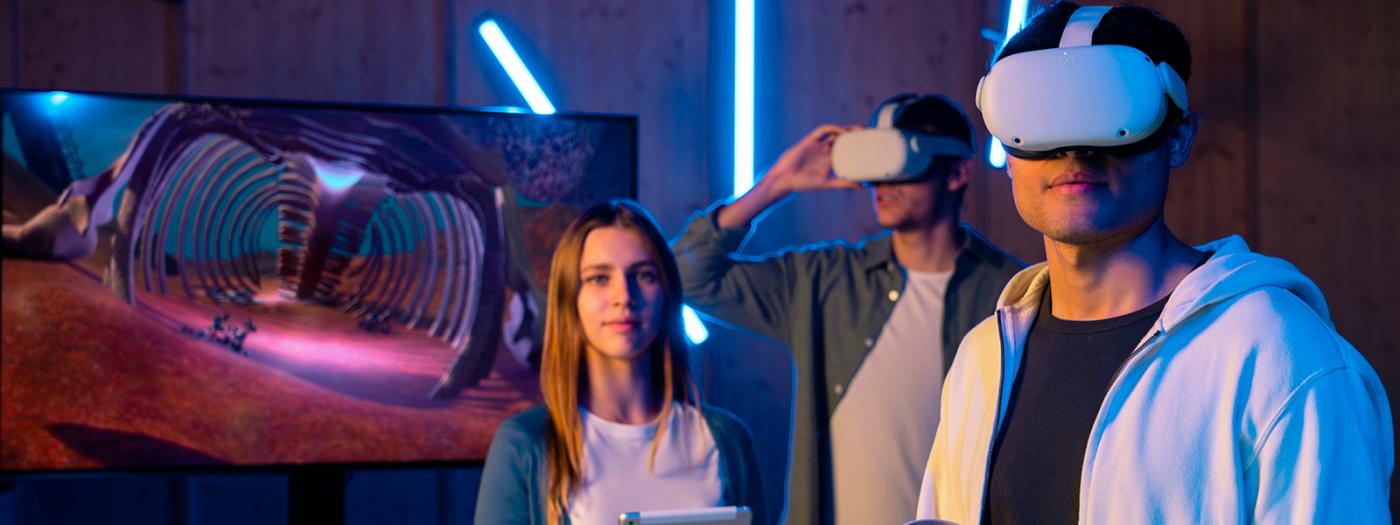This course aims to demonstrate advanced methods and technologies in the world of multimedia. His approach is clearly informative. It is intended that students receive an overview of the most important lines of research in the field of multimedia technologies today.
Titular Professors
Basic knowledge of animation, graphics and programming.
The main objective of the course is to introduce students in advanced multimedia techniques either research or development.
Moreover there are many other goals, as discussed below:
1. Capacity for analysis and synthesis.
2. Basic general knowledge about the study area.
3. Basic knowledge of the profession.
4. Skills training in a specialty.
5. Troubleshooting.
6. Capacity and self-criticism
7. Interpersonal skills
8. Teamwork
9. Ability to apply knowledge in practice
10. Capacity to learn
11. Ability to adapt to new situations
12. Ability to generate new ideas (creativity)
13. Research skills
1. Programming for mobile devices and Java ME (5 weeks)
2. Kinematic Modeling (4 weeks)
3. 3D Facial Animation (2 weeks)
4. Seminars: Research on new trends (4 weeks)
The subject will be taught predominantly presentially. Each week there will be a theoretical session in a classroom where the teacher set out the content for each subject, and, where necessary, will be a second session, to be practical format in a computer classroom. These practical sessions will be seen depending on the agenda that week in class theory, which is estimated to be about half that of theory sessions. The different methods to be used for proper dissemination of the contents of the subject are:
1. Lectures:
The professor teaches the course along the theoretical concepts of the subject through lectures. During classes students are encouraged to ask questions involving both like answering questions made by the teacher. This will get more dynamic and participatory classes.
2. Practical sessions:
The weeks in which the teacher considers it appropriate to conduct a practical class, a session is conducted in a lab with computers for all students, where the teacher shows examples of how to implement what is seen in the lectures and students implemented in the computer what the teacher sample.
3. Seminars:
Throughout the course, sporadically, instead of a regular class focus on one of the main topics of matter, instead of the usual professor invited a speaker expert in an area of research related to the theme of the course that teaches a seminar on their field of expertise. These seminars serve to add variety to the content of the subject and motivate students to learn about other areas of technology, breaking with the usual routine of classes.
4. Work experience:
During the course of programming for mobile and the kinematic modeling, students should perform on your own, in groups, a practice for each of these two topics.
5. Realization of projects:
Throughout the course, students should implement the research ideas that they have transmitted to investigate, find information, assimilate, summarize and draw conclusions about any topic they have been proposed and put everything in writing in an formal report which will present the concepts they learned during their investigation.
6. Exhibitions:
During the last two weeks of course, not the teacher who taught the classes, but students must present themselves in public knowledge and conclusions to be drawn from their research, to share with the other pupils, and, thus, all have learned from the research methodology on some technology, and at the same time, can benefit from the knowledge they have searched all classmates.
D. Work done at home.
Students will do small exercises of kinematic model during the course. Of the parts of Facial Animation Mixed reality and have to do a job.
H. Projects
These two practices a kinematic model and a Mobile Java Games.
I. Presentations
In the delivery of practice, students have to present the report to the rest of the class.
J. Class participation
Class participation, both asking questions as to respond to those posed by the teacher, it takes full account of the assessment.
Objective 1. Capacity for analysis and synthesis.
Is assessed through D, H, I.
Objective 2. Basic general knowledge about? Study area.
Is assessed by J.
Objective 3. Basic knowledge of the profession
Is assessed through H.
Goal 4. Skills training in a specialty.
Is assessed through H.
Goal 5. Troubleshooting.
Is assessed by D, H.
Goal 6. Ability to critique and criticism.
Is assessed through D, H, I, J.
Goal 7. Interpersonal skills
Is assessed through H.
Goal 8. Teamwork.
Is assessed through H.
Goal 9. Ability to apply knowledge in practice
Is evaluated by S, H.
Goal 10. Capacity to learn
Is assessed through H.
Objective 11. Ability to adapt to new situations.
Is assessed through H.
Objective 12. Ability to generate new ideas (creativity)
Is evaluated using H, J.
Objective 13. Research skills
Is evaluated through H, J
